Home » Blog » Emergency Repairs » Run Flat Tyres: Everything You Need to Know
Have you been offered run flat tyres for your car and want to know the pros and cons? Maybe you’ve just heard of them and you’re interested to know more about how run flat tyres work, what maintenance they require, and if they’re actually worth the extra money you’ll pay for them. If so,check out our complete guide below.
Run flat tyres are designed to remain safe and functional for a limited time with no air pressure. That means, in the event of a puncture, you can continue driving for around fifty miles without having to change the tyre — which could be enough to get you home, or to a garage.
Unlike conventional tyres, which require air to stay hard, run flat tyres have a reinforced sidewall, meaning they stay rigid without any air pressure.
The reinforced outer shell of run flat tyres keeps the rubber in place without air, supporting the car as you continue your journey. However, the sidewall isn’t designed to be permanent, and is only recommended for around 50 miles of additional driving after the tyre has deflated.
All cars that are compatible with run flat tyres have a tyre pressure monitoring system (TPMS), which is designed to alert the driver in the event of loss of air pressure. Without a TPMS system, it would be almost impossible to detect a puncture, given that run flat tyres will continue to work even when they’re deflated.
Most TPMS systems display an alert on the centre console, reminding the driver that they should stop driving after 50 miles and seek a tyre repair or replacement.
Generally, run flat tyres use the same rubber compounds as conventional tyres, so you can expect similar longevity. Despite their reinforced components, run flats will wear at the same rate as standard tyres, and require the same level of care and maintenance.
To keep your run flat tyres in good condition, check their pressure, depth and condition every fortnight. This will ensure you get maximum life out of your tyres before having to replace them.
Run flat tyres aren’t repairable. That’s because, once they’ve been driven on, they lose their structural integrity, making them unsuitable for puncture repair. If they are patched up, it’s highly likely they’ll puncture again down the line due to uneven wear and loss of rigidity.
And that’s their biggest drawback compared to conventional tyres, which can often be repaired reasonably cheaply after a puncture (provided the hole isn’t in the sidewall).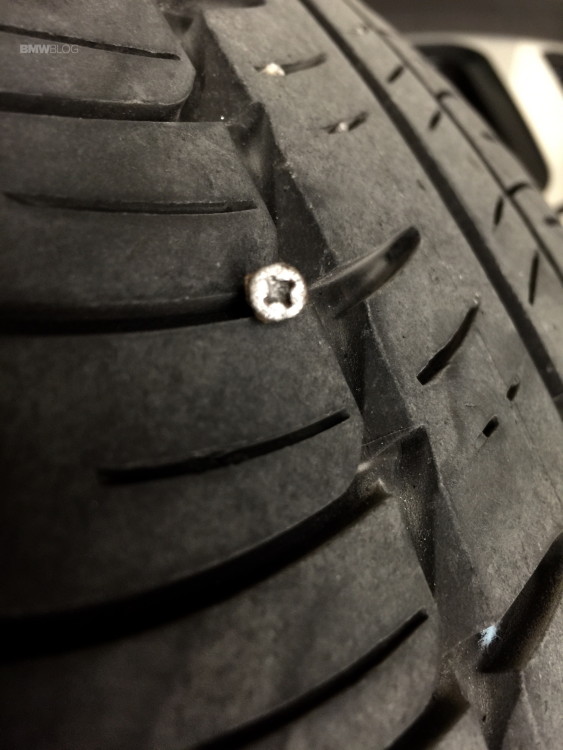 Given the expense of buying run flat tyres in the first place, each puncture could end up costing a small fortune.
Given the expense of buying run flat tyres in the first place, each puncture could end up costing a small fortune.
In a word, yes. Because run flats aren’t widely available, they tend to be a lot more expensive than ordinary tyres and can only be fitted to certain cars — putting them beyond the price point of the average motorist. Couple that with the fact they can’t be repaired, and they won’t make a whole lot of sense for most drivers.
If you don’t fancy paying through the nose for a car with run flat tyres, Holts Tyreweld Emergency Puncture Tyre Repair offers the next best thing. In the event of a puncture, this innovative DIY product quickly seals and re-inflates your tyre — allowing you to get to a garage without having to mess around with a spare wheel.
To find out more about our DIY car care range, visit our homepage.
Run flat tires: Does this tire look flat to you? I couldn’t tell either, even when it was.
A really great thing happened to me recently: I had a flat tire.
Or rather, I didn’t have a flat tire, I had a damaged run flat tire. Because I have run flat tires on my car, it’s impossible to have a truly flat tire.
A Girls Guide to Cars may earn a commission from links contained on this page, but don’t worry, we only recommend products we love? And, there is no additional cost to the buyer when a purchase is made by clicking these links.
I first heard about run flats when I was thinking of buying my car, and this was a major selling point. Run flat tires don’t ever actually go flat. They are made of very stiff rubber and a very thin inner tube that when fully deflated, still can support the weight of the car. You can drive 100 miles or so on a flat tire, which means you never need to change a tire on the side of the road, you don’t have to call for roadside assistance and you don’t have to stop what you’re doing get the tire changed. You just drive your car to the tire dealer and have it taken care of.
You just drive your car to the tire dealer and have it taken care of.
I discovered I had a flat tire when the tire pressure monitor sensor went off. I reset it, according to the manufacturer’s instructions and it quickly came back on again.
A few days later, when I had time, I took the car to the car dealer. The tire was flat, I was told, and it would have to be replaced. So they replaced it. An hour, a cup of coffee and $250 later, I was on my way. While the tire was expensive and I could have gotten it cheaper if I’d gone to a tire store rather than the dealer, I was happy that I could have the tire changed at my convenience, I didn’t have to wait for a tow truck or roadside assistance, and I wasn’t left stranded by the experience.
Further reading: Our Continental run flat tire review
Make sure your tires are in good condition. Photo: Scotty Reiss

Run flats are more expensive than regular tires.
Partially because they are ‘performance’ tires designed for high end or performance cars, and partially because they are a smaller part of the market, they tend to be more expensive. Also, when you have a damaged run flat tire, you most likely will have to replace it; they can’t be patched or reused. However, I’ve never had a flat that I didn’t have to replace (isn’t that an urban myth?).
Run flat tires are also a rougher, louder ride. Every time you hit a pothole it feels as if you’ve hit a deer—it can be jarring and you’re sure you’ve done damage to your car (even though you most likely haven’t).
Further reading: Michelin is helping teens to learn about tire safety
Run flat tires are about to become more common. Tire companies, realizing that consumers like the idea of never having a flat tire, that most new cars are built with TPMS, or tire pressure monitoring sensors—necessary because you can’t tell that a run flat tire is flat by looking at it—and that shedding the cost and weight of a spare tire ($200 and 70 lbs!) saves money and fuel, they’ve stepped up product development.
Soon expect to hear about new run flats that are more comfortable to drive and less expensive. And, if you have an older car without a TPMS, you can still switch to run flats: A TPMS system can be purchased at an auto parts store for under $200.
Journalist, entrepreneur and mom, Scotty likes to say the automotive business found her, she didn't pursue it. But recognizing the opportunity to give voice to powerful female consumers and create a voice to match their spending power, her mission became to empower women as car buyers and owners. A career-long journalist, she has written for the New York Times, Town & Country, Adweek and co-authored the book Stew Leonard, My Story, a biography of the founder of the iconic grocery company Stew Leonard’s. Her love of cars started when her father insisted she learn to change the oil in her MG Midget, but now it mostly plays out in the many road trips taken with her family.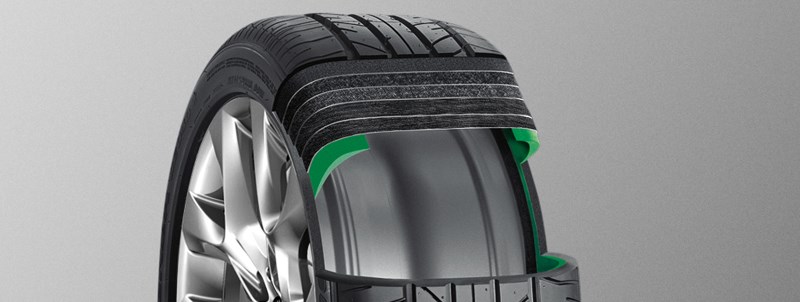
Tire puncture is a common problem that often occurs on Russian roads. For many drivers, its solution is not very difficult: it is enough to install a spare tire and drive to the nearest workshop. However, there are situations when it is quite problematic to do this. For example, not every girl is capable of installing a car spare wheel. In addition, two tires are often damaged at once. It was to solve such situations that the RunFlat technology was created. It allows you to continue driving even if the tire is flat or there is a loss of pressure due to a puncture. Like any development, RunFlat has its own features, advantages and disadvantages. You will learn about all the important nuances of technology from this article.
Translated into Russian, Run-Flat literally means "flat ride". This technology allows you to go further even in the event of a rubber puncture. RunFlat tires differ from conventional tires in the following details.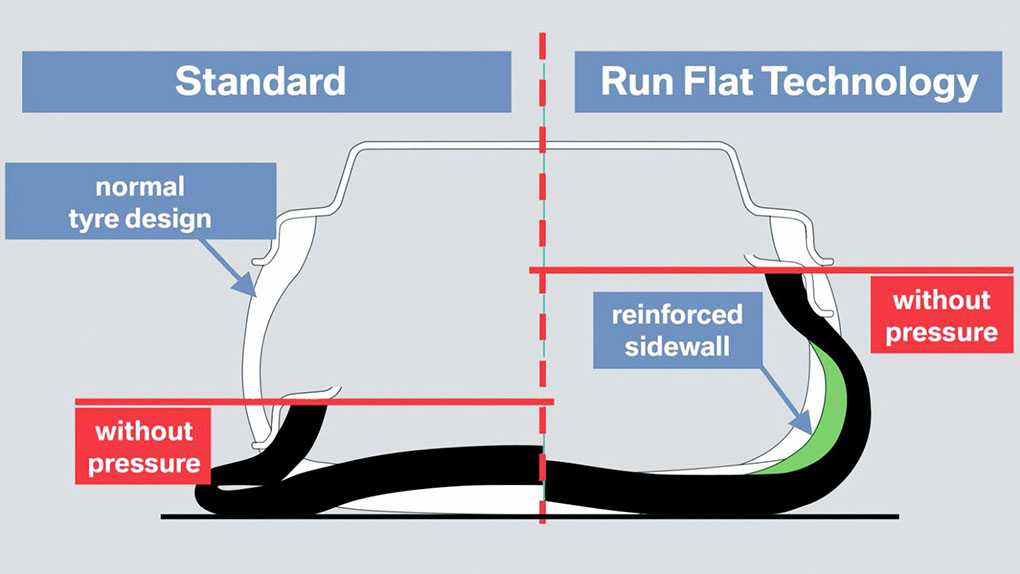
Wide side ring with additional reinforcement.
Rubber resistant to high temperatures.
Sturdy sidewall.
The presence of amplifiers in the frame.
Thanks to these features, run-flat tires do not sag under the weight of the car in the event of a tread puncture, as conventional tires do. Reinforced sidewall and other elements of RunFlat do not allow the rubber to come off the disk, keep the car in a straight line.
Depending on the design features, there are several types of RunFlat safety tires that do not descend from punctures.
They are sometimes referred to as zero pressure rubber. Tires with the RunFlat system have a reinforced sidewall and carcass. In addition, tires have a heat-resistant compound and special longitudinal ribs. All this ensures better cooling while driving. If the runflat carrier tire has been damaged, it will be able to stay on the rim and provide traction. The disadvantage of these tires is that they can only be installed on vehicles equipped with pressure control systems (RDC, TPMS, RPA) and directional stability (ESP).
The disadvantage of these tires is that they can only be installed on vehicles equipped with pressure control systems (RDC, TPMS, RPA) and directional stability (ESP).
Some manufacturers create a special layer inside the rubber that can tighten small punctures. Even if a sharp object flies out of the tire, the hole will be closed and you can go further without losing control. This is the key feature of self-sealing run-flat tires.
These tires are slightly different from regular tires. An elastic ring is installed on the wheel rim. It provides a supportive effect when pressure is lost inside a damaged run-flat tyre.
Tires with run-flat pressure technology won't eliminate the need to visit a tire shop. However, it is thanks to them that you can refuse the services of a tow truck and not carry a “spare tire” with you.
In the event of a puncture, tires with the RunFlat system will not be allowed to drive many kilometers (up to 80 km on average).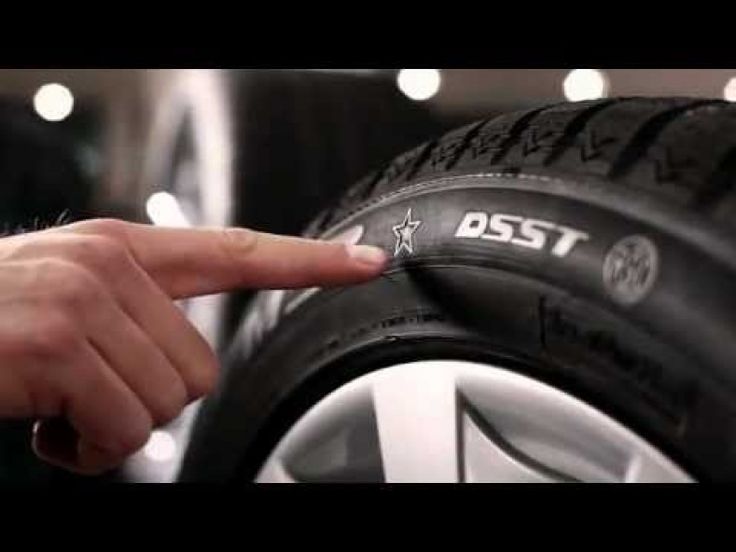 At the same time, it is worth refusing to make sudden maneuvers and limit the speed to 80 km / h. It is because of the presence of such conditions that the use of RunFlat tires on vehicles without a system that controls the pressure level is prohibited. The driver may not notice the damage and continue to drive aggressively, which is extremely dangerous. In addition, it is worth remembering that each manufacturer sets its own speed limits and distances for traveling on damaged tires with the RunFlat system.
At the same time, it is worth refusing to make sudden maneuvers and limit the speed to 80 km / h. It is because of the presence of such conditions that the use of RunFlat tires on vehicles without a system that controls the pressure level is prohibited. The driver may not notice the damage and continue to drive aggressively, which is extremely dangerous. In addition, it is worth remembering that each manufacturer sets its own speed limits and distances for traveling on damaged tires with the RunFlat system.
Run-Flat tires are sold individually or as a complete set. Which option to prefer is the personal choice of each driver. The supply of complete run-flat tires is a unique offer from Mercedes-Benz and BMW dealers.
Installing tires with RunFlat technology will not cause additional difficulties. Overboarding can be done every season. To carry out the work, you will need professional qualifications, Easymont (“Third Hand”) equipment, which makes it easy to remove tires with the RunFlat system. All this can be found in a quality tire shop. Some models also allow puncture repair.
All this can be found in a quality tire shop. Some models also allow puncture repair.
The advantages of safe tires are obvious.
Safety.
Saving time for reordering.
Improved steering response.
Save space in the trunk by eliminating the spare wheel.
RunFlat technology also has some disadvantages.
Limited use (the car must have a tire pressure monitoring system).
High price (unlike conventional tires, it is 15-25% more expensive).
Increased sidewall stiffness leads to reduced driving comfort.
Continental IceContact 2 SUV
The design of the tire from the German manufacturer has a rigid reinforced sidewall. Even in the event of a loss of pressure, it does not differ externally from a normal inflated tire. At the same time, RunFlat tires from the Continental brand have high levels of acoustic comfort.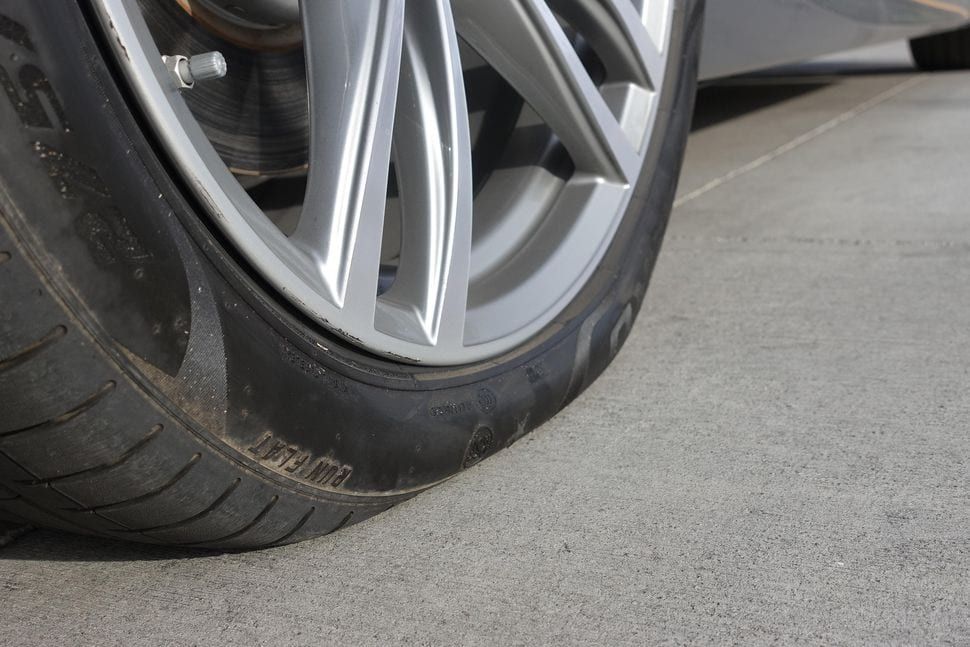 The tires respond quickly to the movement of the vehicle's steering wheel and provide driving safety through a directional pattern and the inclusion of steel studs.
The tires respond quickly to the movement of the vehicle's steering wheel and provide driving safety through a directional pattern and the inclusion of steel studs.
Goodyear Eagle UG GW-3
Runflat tires from an American manufacturer, suitable for those who like to move at high speeds. Tires are not studded, but do well in wet snow porridge. At the same time, decent grip of the car with the road is noted during heavy braking, cornering at speeds up to 100 km / h. The run-flat design of tires provides acoustic comfort, the ability to continue moving even with a sudden loss of pressure.
Bridgestone Blizzak RFT
These tires from a Japanese manufacturer are available in diameters from R16 to R19. Reinforced sidewalls of RunFlat tires help maintain directional stability even during pressure loss due to damage. The asymmetric pattern contributes to reliable grip on all types of surfaces and a high level of maneuverability. The RC-polymer modifier in the rubber compound ensures the stability of run-flat tires during temperature fluctuations.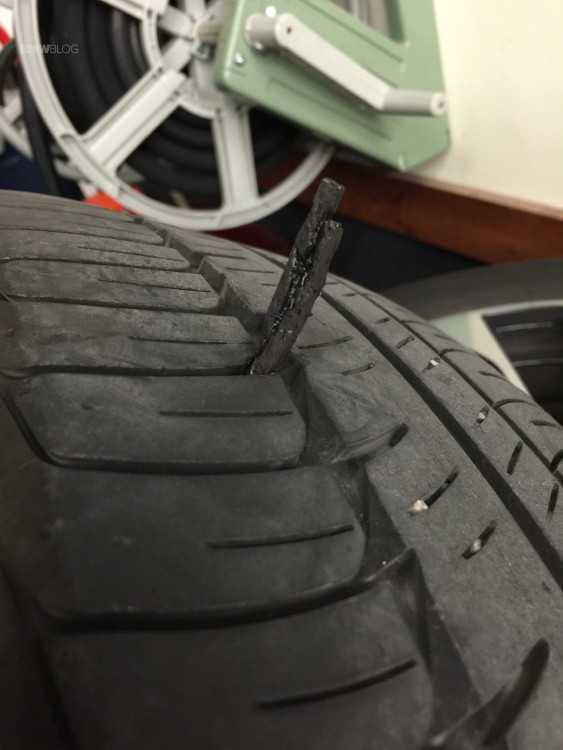
Nokian Tires Hakkapeliitta 7 SUV
RunFlat technology is implemented in the design of tires from sizes R17-R19. The special rubber composition and reinforced sidewalls allow the car to travel up to 100 km even if the tires are deflated. The symmetrical pattern with the inclusion of metal studs provides reliable grip on icy and snowy roads.
Dunlop SP Sport Maxx TT
This UK manufacturer's RunFlat tire offers good traction and durability. In order for the tires to remain stable even when pressure is lost, nanoparticles similar in properties to diamond are added to the rubber composition. The sidewall is reinforced with Kevlar thread. Tires are not afraid of punctures, resistant to minor damage. While driving, the car is stable, precise in control, not subject to aquaplaning and skidding when cornering. All this is provided by the tread pattern, built using mathematical modeling, and the special design of the side blocks.
Kumho ECSTA PS71
These RunFlat tires are available in sizes R16 to R19.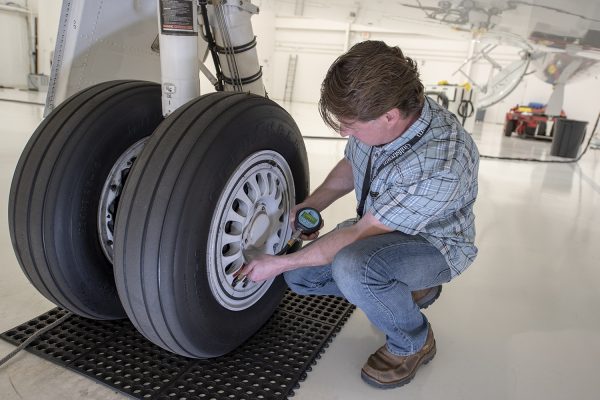 Suitable for those who like to ride at high speeds. Reinforced sidewall adds rigidity to the structure, which contributes to better maneuverability, good traction. The South Korean manufacturer also took care of maintaining an affordable price, which is successfully combined with a high level of quality and wear resistance.
Suitable for those who like to ride at high speeds. Reinforced sidewall adds rigidity to the structure, which contributes to better maneuverability, good traction. The South Korean manufacturer also took care of maintaining an affordable price, which is successfully combined with a high level of quality and wear resistance.
Yokohama Advan Sport ZPS
Tires from the Japanese manufacturer are designed with the principles of the RunFlat system, which ensures safety even when the pressure is released. They are available in sizes R16 to R20. They are distinguished by a soft tread, which allows you to maintain precise control of the car and a high level of grip even at high speed.
Michelin Pilot Sport PS2
The French manufacturer has taken care of premium cars and powerful sports cars. The included RunFlat technology allows you to maintain maneuverability even if the tires are suddenly deflating. The rigidity of the structure and the special tread pattern provide fast acceleration and braking, reliable grip on wet and dry road surfaces.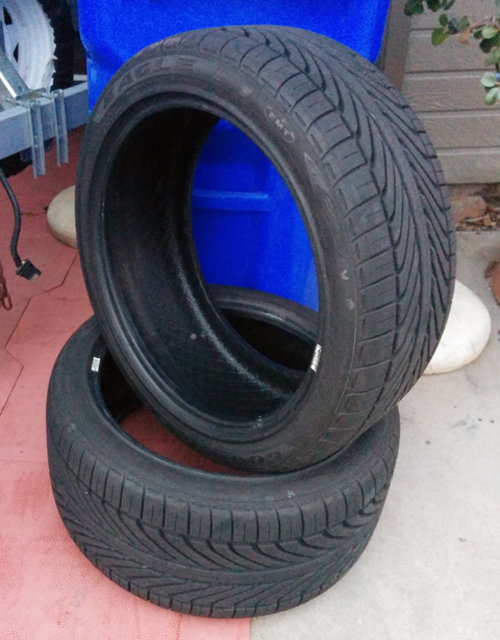 At the same time, the level of acoustic comfort remains acceptable even at high speeds.
At the same time, the level of acoustic comfort remains acceptable even at high speeds.
Tire load indices Friction tires - what is it
The literal translation of the word RunFlat (Ranflet) into Russian means "driving on flat tires." This technology allows the vehicle to continue moving when the tire is completely depressurized (for example, due to a puncture). Different tire manufacturers refer to this technology in different ways:
The basis of RunFlat technology is a reinforced sidewall of the tire, which supports the weight of the car when the pressure is completely lost.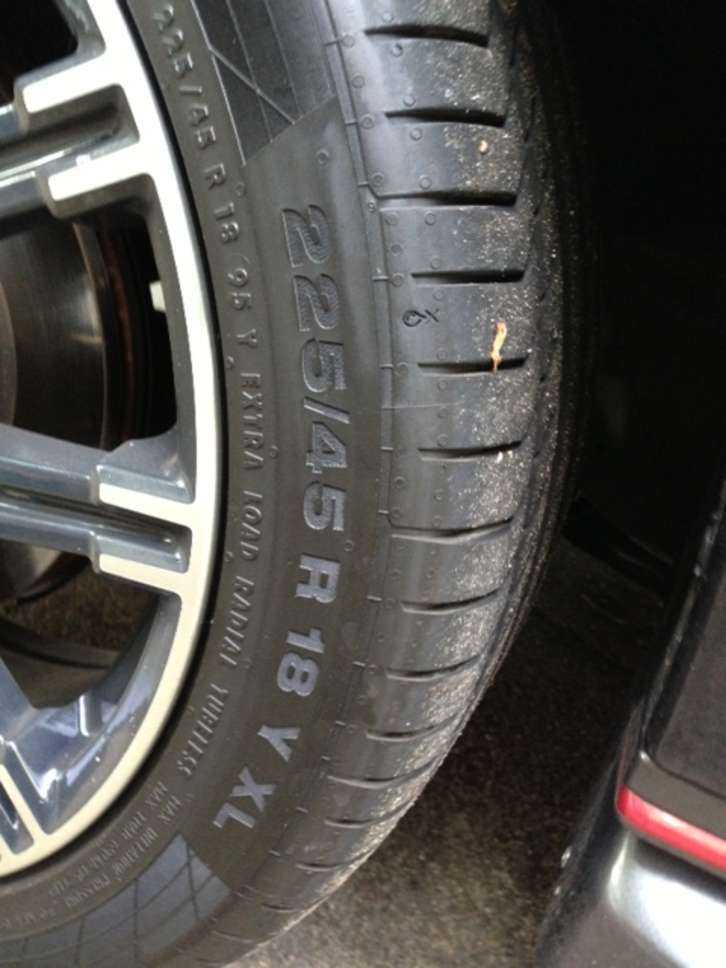 Reinforced sidewalls continue to hold the RunFlat tire on the rim and support the vehicle's weight after a puncture and complete loss of pressure. It should be noted that all safety systems such as ABS, ESP, DSC, CBC, etc. remain in working order.
Reinforced sidewalls continue to hold the RunFlat tire on the rim and support the vehicle's weight after a puncture and complete loss of pressure. It should be noted that all safety systems such as ABS, ESP, DSC, CBC, etc. remain in working order.
All manufacturers guarantee that the tire, after loss of pressure, is able to travel another 80 kilometers at a maximum speed of 80 km/h. As practice shows, the real figures are much higher than the declared ones.
Without a pressure monitoring system, running RunFlat tires is extremely dangerous.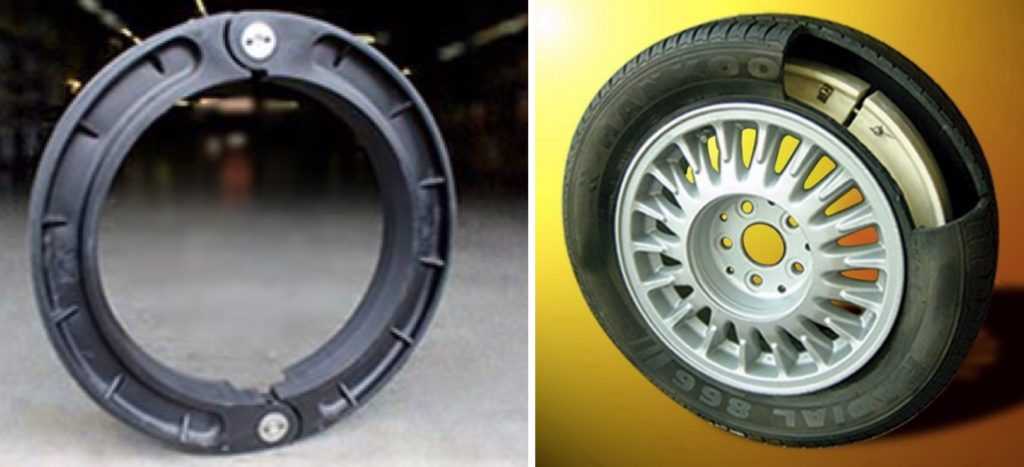 The fact is that the driver will not be able to fix the moment of pressure drop in the RunFlat tire and will continue to move without limiting himself in speed, making sharp maneuvers.
The fact is that the driver will not be able to fix the moment of pressure drop in the RunFlat tire and will continue to move without limiting himself in speed, making sharp maneuvers.
All manufacturers of runflat tires accept their installation on standard rims and allow tire changes every season without any negative consequences for the tires or rims themselves.
Enough qualified installer and equipment equipped with a "third hand"
Repair is possible only on the tread part of the tire.
We recommend that all vehicles equipped with RunFlat tires use the Tire Pressure Monitoring System (TPMS).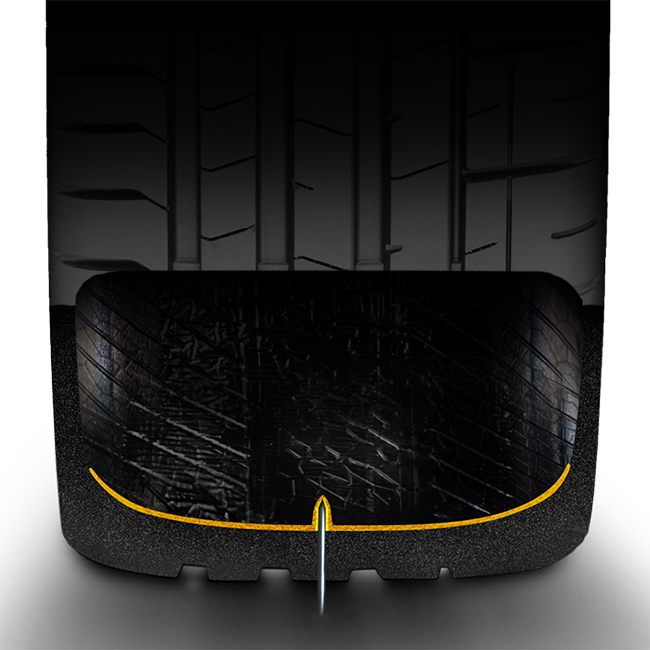 It will help the driver to notice a puncture and deflation of the tire.
It will help the driver to notice a puncture and deflation of the tire.
Technically, Run Flat tires can be installed on any vehicle. However, we recommend installing them only on vehicles that require Run Flat tires. In addition, we highly recommend using the TPMS Tire Monitoring System with them.
RunFlat tires can be installed at many specialized tire shops. Resetting the air pressure (resetting) in monitoring systems should be done in car repair shops.
If the RunFlat tire has been driven for at least a short time after a deflation, we recommend that you replace such a tire with a new one. In the event that a normal small puncture mark is found on the surface of the tire and the tire is not flat, it can be repaired using the usual technology for tubeless tires.